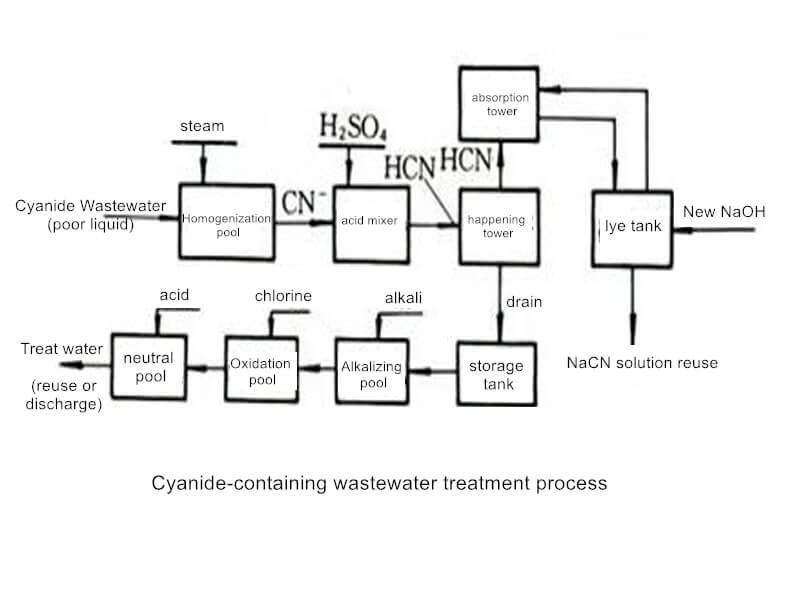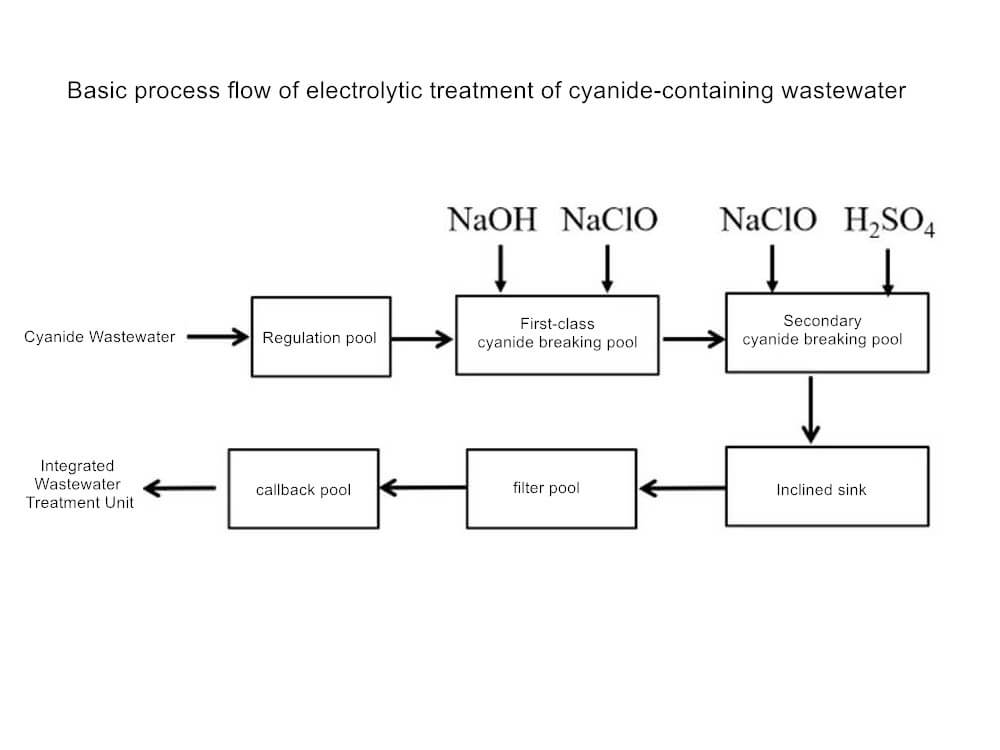In terms of wastewater treatment in most mineral processing plants, the sewage is poured into a larger container in a natural purification way. The sewage is allowed to stand in the container first. The time is used as the unit to place the sewage, and finally, the sedimentation of the suspended solids in it can be used to treat the sewage and sewage again through other technologies. Due to the single composition of certain minerals, which account for a relatively large proportion of the production and use of mines and produce less waste, the above treatment methods are entirely applicable to a small number of minerals in my country. However, the cyanide-containing wastewater of the gold ore dressing plant is mainly barren cyanide solution, with a high cyanide content, generally above 200ml/g. Therefore, more than a single method of natural purification is needed to achieve the treatment effect of making wastewater meet the standard. As far as China’s current treatment methods are concerned, there are mainly four types of sewage treatment.
Treatment of Cyanide-containing Wastewater
1. Physical adsorption method
By using a variety of porous adsorbents to adsorb pollutants in wastewater, this treatment method can significantly reduce the intensity and difficulty of reprocessing sewage after adsorption. Still, the cost of common adsorbent raw materials is relatively high. It could be more suitable for mines and enterprises. And the selection of raw materials such as slag and cinder lamps. However, the cost price is reduced and can not guarantee the same excellent effect as high-cost adsorbents in the subsequent treatment process. Therefore, some small enterprises will use the reuse rate of activated carbon in the atmosphere treatment process to reduce the following treatment funds for sewage waste.
2. Chemical precipitation method
In the sewage treatment of the older generation, the oxidation precipitation process is the primary treatment method for gold mines in my country, which aims to separate heavy metal arsenic from sewage waste. However, in the gradual practice and research in recent years, the stability of the trivalent arsenic sediment needs to be further investigated. It has considerable toxicity, which does not meet my country’s sewage and waste discharge standards. Therefore, it is necessary to oxidize trivalent arsenic to pentavalent arsenic and proceed to the next step of treatment. It not only ensures the stability of the pentavalent arsenic precipitate but also reduces the toxicity of the sediment and controls the sewage discharge index within limits permitted by the state.

3. Filtration method
Filtration is the most primitive and ancient way of thinking about wastewater treatment in mineral processing plants. In modern times, there is a continuous automatic filter. While inheriting the traditional way of thinking, it also has unique advantages. The processor uses countercurrent as the main principle. The wastewater enters from the water inlet pipe, passes through the water distributor at the bottom, and passes through the filter bed from bottom to top, and the filtrate that flows down is discharged at the overflow hole. The filter material filtered on the filter bed is cleaned in the sand washer, and the impurities floating above are discharged through the cleaning port for washing. The remaining filter material is returned to the sand-washing bed, and the above steps are repeated. The continuous automatic filter can also carry out the backwashing step during the filtering process so that it can be continuously filtered to meet the requirements of non-stop production. The filtered waste is returned to the system for multiple treatments, which is also an effective use of mineral resources. This instrument is commonly used in the advanced treatment of drinking water, surface water, industrial water, and sewage treatment plants.
4. Electrochemical method
By electrolyzing harmful substances, inert substances such as granular carbon are used as cathodes, iron is used as anodes, and then the entire wastewater treatment pool is formed into a primary battery. In the galvanic reaction, the iron in the anode is reduced through chemical reactions such as redox and combined with hydroxide ions ionized in water to form flocculent precipitates. It can see that this method has an excellent effect on the oxide reduction of heavy metals, and at the same time, it is also a new method of domestic sewage treatment in recent years. Among the methods mentioned above, it can compare that the advantages of the electrochemical process are good selectivity, strong removal effect, small footprint, and no secondary pollution. In addition, the pretreated heavy metals can also be recycled and utilized to achieve resource recycling characteristics.

China’s mine development is gradually becoming more and more perfect. In recent years, many new sewage treatment methods have emerged, such as:
- Acid-base neutralization technology
- Coagulation sedimentation technology
- Chemical oxidation technology
- Constructed wetland sewage treatment technology
Based on these new technologies, to improve the environment of mines and the lives of surrounding people better, what should we do?
- Vigorously promote the establishment of a wastewater circulation system
- Cooperate with various sewage treatment methods
- Strengthen technological updates
- Adopt techniques to reduce wastewater discharge
- Save water resources
